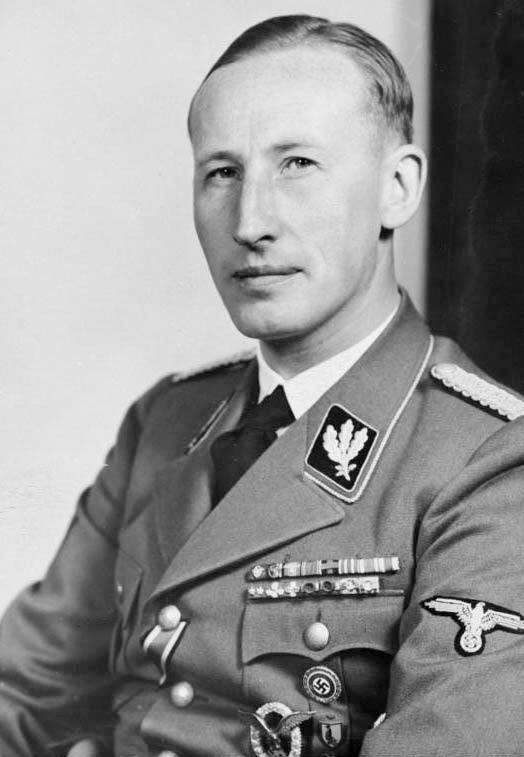|
Grossaktion Warsaw
The ''Grossaktion'' Warsaw ("Great Action") was the Nazi code name for the deportation and mass murder of Jews from the Warsaw Ghetto during the summer of 1942, beginning on 22 July. During the ''Grossaktion'', Jews were terrorized in daily round-ups, marched through the ghetto, and assembled at the ''Umschlagplatz'' station square for what was called in the Nazi euphemistic jargon "resettlement to the East". From there, they were sent aboard overcrowded Holocaust trains to the extermination camp in Treblinka. The largest number of Warsaw Jews were transported to their deaths at Treblinka in the period between the Jewish holidays Tisha B'Av (23 July) and Yom Kippur (21 September) in 1942. The killing centre had been completed from Warsaw only weeks earlier, specifically for the Final Solution. Treblinka was equipped with gas chambers disguised as showers for the "processing" of entire transports of people. Led by the SS-leader ''Brigadeführer'' Odilo Globocnik, the campaign, c ... [...More Info...] [...Related Items...] OR: [Wikipedia] [Google] [Baidu] |
Umschlagplatz
''Umschlagplatz'' (german: collection point or reloading point) was the term used during The Holocaust to denote the holding areas adjacent to railway stations in occupied Poland where Jews from ghettos were assembled for deportation to Nazi death camps. The largest collection point was in Warsaw next to the Warsaw Ghetto. In 1942 between 254,000 – 265,000 Jews passed through the Warsaw ''Umschlagplatz'' on their way to the Treblinka extermination camp during Operation Reinhard, the deadliest phase of the Holocaust in Poland. Often those awaiting the arrival of Holocaust trains, were held at the ''Umschlagplatz'' overnight. Other examples of ''Umschlagplatz'' include the one at Radogoszcz station - adjacent to the Łódź Ghetto - where people were sent to Chełmno extermination camp and Auschwitz. In 1988, a memorial was erected in Warsaw to commemorate the deportation victims from the ''Umschlagplatz''. The monument resembles a freight car with its doors open. It is locate ... [...More Info...] [...Related Items...] OR: [Wikipedia] [Google] [Baidu] |
Operation Reinhard
or ''Einsatz Reinhard'' , location = Occupied Poland , date = October 1941 – November 1943 , incident_type = Mass deportations to extermination camps , perpetrators = Odilo Globočnik, Hermann Höfle, Richard Thomalla, Erwin Lambert, Christian Wirth, Heinrich Himmler, Franz Stangl and others. , participants = , organizations = SS, Order Police battalions, ''Sicherheitsdienst'', Trawnikis , camp = BelzecSobiborTreblinka Additional: ChełmnoMajdanek Auschwitz II , ghetto = European and Jewish ghettos in German-occupied Poland including Białystok, Częstochowa, Kraków, Lublin, Łódź, Warsaw and others , victims = Around 2 million Jews , survivors = , witnesses = , documentation = , memorials = On camp sites and deportation points , notes = This was the most lethal phase of the Holocaust. Operation Reinhard or Operation Reinhardt (german: Aktion Reinhard or ; also or ) was the codename of the secret Ger ... [...More Info...] [...Related Items...] OR: [Wikipedia] [Google] [Baidu] |
Friedrich-Wilhelm Krüger
Friedrich-Wilhelm Krüger (8 May 1894 – 10 May 1945) was a German war criminal and paramilitary commander acting as a high-ranking member of the SA and the SS. Between 1939 and 1943 he was the Higher SS and Police Leader in the General Government, giving him command of all police and security forces in German-occupied Poland. In this capacity, he organized and supervised numerous crimes against humanity and had major responsibility for the German genocide of the Polish nation: the extermination of six million Poles (three million of them Polish Jews) and massive destruction, degradation and impoverishment of the Polish state. At the end of the war, he committed suicide. Career Krüger was born into a military family in Strassburg, Alsace-Lorraine, Germany (nowadays, Strasbourg, France) in 1894; he left school before graduating to begin a military career as a cadet in military schools in Karlsruhe and Gross-Lichterfelde. In June 1914, Krüger was commissioned a second lieute ... [...More Info...] [...Related Items...] OR: [Wikipedia] [Google] [Baidu] |

